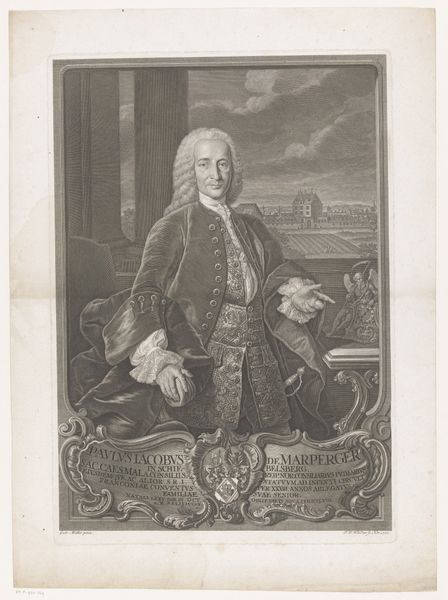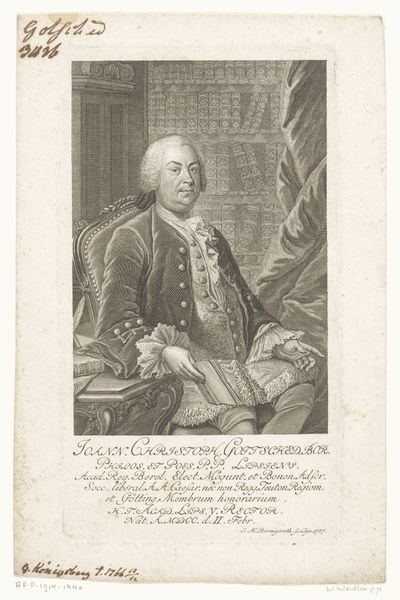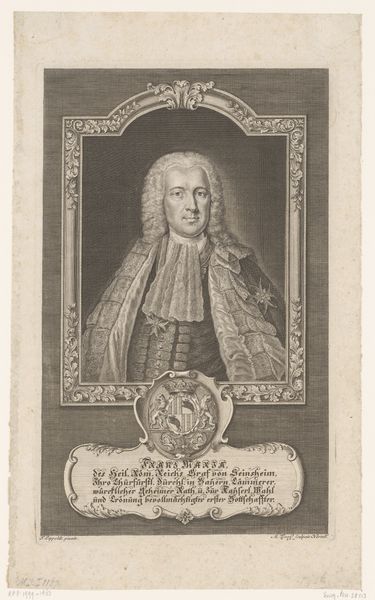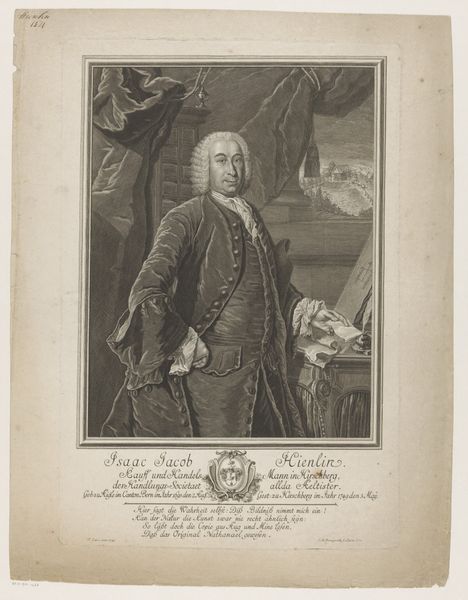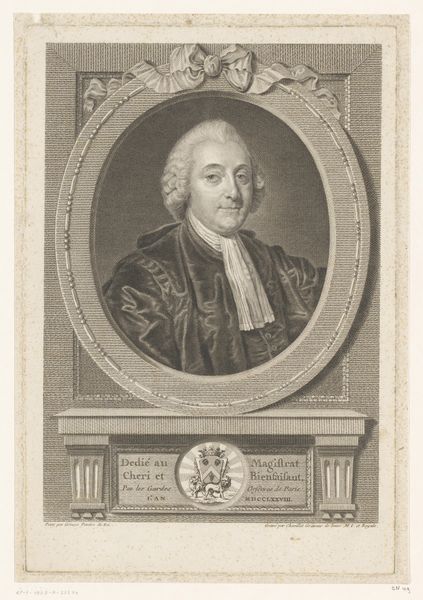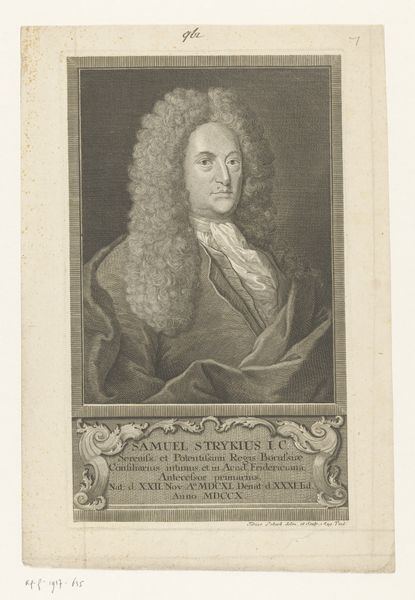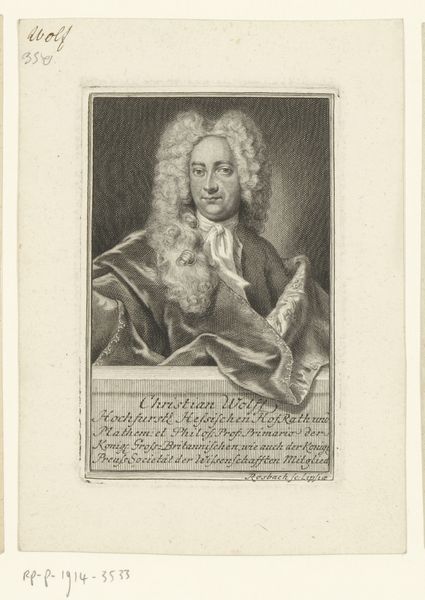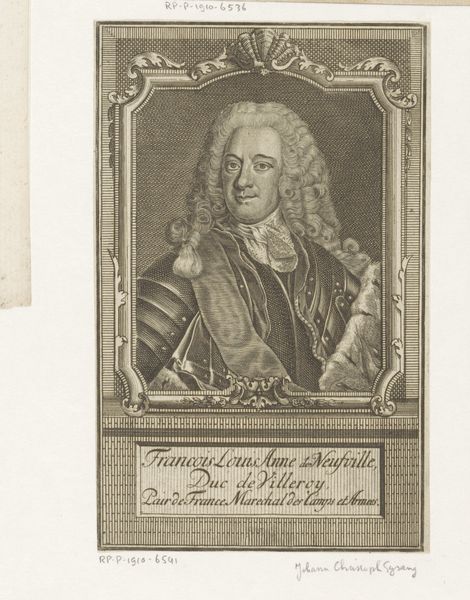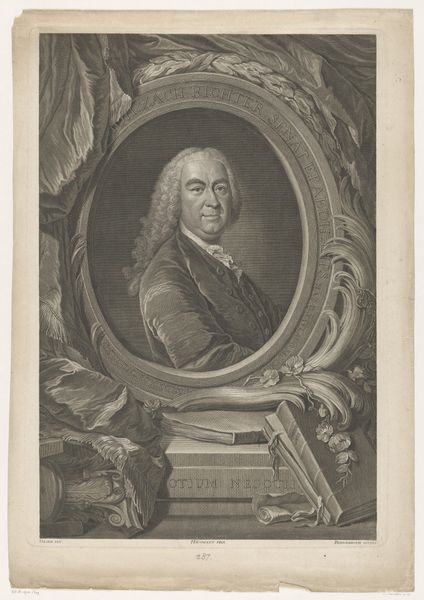
print, engraving
#
portrait
#
baroque
# print
#
book
#
pencil sketch
#
old engraving style
#
history-painting
#
engraving
Dimensions: height 218 mm, width 172 mm
Copyright: Rijks Museum: Open Domain
Editor: This is a print from 1755, titled "Portret van Christian Wolff," by Johann Martin Bernigeroth. It's an engraving and quite detailed. I’m immediately struck by the textures; you can almost feel the weight of the book he's holding. What do you see in this piece, particularly in how it reflects the artistic process of the time? Curator: Well, focusing on the materiality, we must acknowledge that an engraving like this was inherently reproducible. The artist's labor went into creating a matrix, a copper plate from which identical images could be printed, bought, and distributed. It democratized art, making portraiture accessible beyond the elite who could afford paintings. Think about the societal implications – this image could circulate widely, solidifying Wolff's image and ideas. Editor: So it's less about the artistic genius and more about production and dissemination? Curator: Not necessarily 'less about,' but 'also about.' Bernigeroth's skill is evident in the lines he etched, capturing light and shadow. But consider how that skill served a burgeoning market. The choice of engraving over painting highlights the rise of a print culture and the increased importance of the dissemination of knowledge. The print is a commodity, a tangible representation of intellectual and social standing in Baroque society. Where was this print made, and for whom? Editor: I think it was made in Germany. So this portrait democratized Wolff’s image by transforming it into a marketable object? Curator: Precisely! This wasn't just art; it was a commodity participating in broader networks of production, consumption, and the spread of Enlightenment ideals. This is a fascinating point where art blurs into industry, and images themselves become a type of currency. Editor: I’ve never considered it from that point of view; thinking about the material conditions behind art changes everything! Curator: Indeed! Recognizing that even seemingly unique artwork has complex ties to manufacture can unlock entirely new perspectives!
Comments
No comments
Be the first to comment and join the conversation on the ultimate creative platform.
